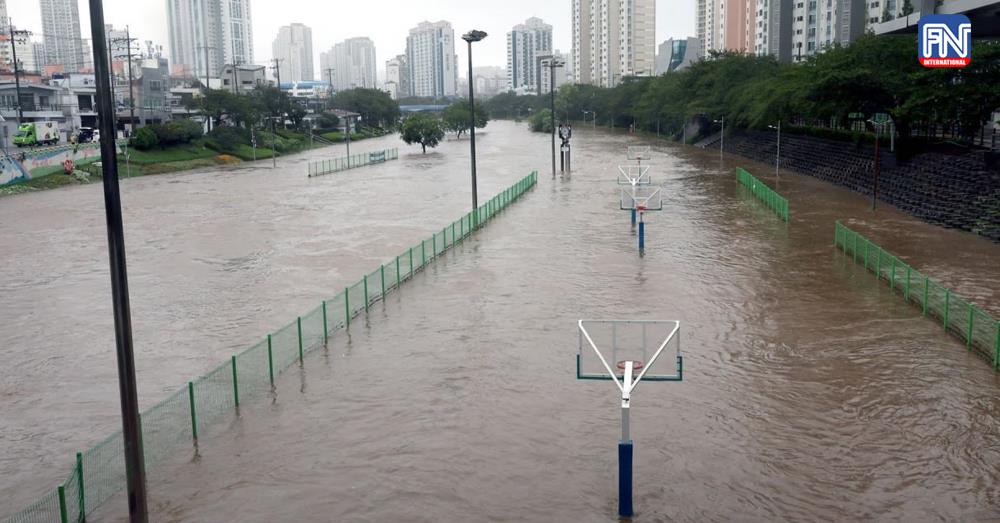SEOUL, Aug 10 (Reuters) - Typhoon Khanun made landfall on the southeast coast of South Korea on Thursday after dumping heavy rain across southern Japan over the past week.
Warnings have been issued across South Korea, with more than 330 flights cancelled and more than 10,000 people moved to safety.
The storm has brought up to 60 mm (2.36 inches) of rain per hour in areas on the east coast with maximum wind speeds of 90 kph in parts of Gyeongsang Province and Jeju Island, South Korea's weather agency said.
Khanun is passing between Japan's main southwestern island of Kyushu, 860 km (530 miles) from Tokyo, and the Korean Peninsula, picking up a little speed as it moves north at 20 kph (12.5 mph)
Fed by humid air from the storm, heavy rain was still battering parts of western Japan, with some areas getting well over the normal for August in the past week. One town had recorded 985 mm as of Thursday morning.
In South Korea, outdoor activities have been halted for participants of the World Scout Jamboree. About 37,000 scouts were on Tuesday moved out of their campsite in the path of the storm to safer accommodation.
More than 1,500 schools have adjusted their schedules or closed because of the storm, with 877 switching to remote learning, the education ministry said.
South Korea is still recovering from intense monsoon rain last month, when more than 40 people were killed in floods and landslides, including 14 in a flooded tunnel.
North Korea is also bracing for the storm, with Khanun expected to barrel through its capital, Pyongyang. Sand bags and pumps had been prepared in vulnerable areas, the KCNA state news agency reported on Wednesday.
But attention was already turning to another storm, Typhoon Lan, which passed near the Ogasawara Islands, about 1,000 km south of Tokyo, late on Wednesday and was heading north, northwest at 15 kph (9.3 mph).
Though the storm's path was uncertain, the Japan Meteorological Agency (JMA) said it could affect the Tokyo area towards the end of the weekend.
The bad weather is striking in the middle of Obon, Japan's main summer holiday when many people leave big cities to return to their home towns.
